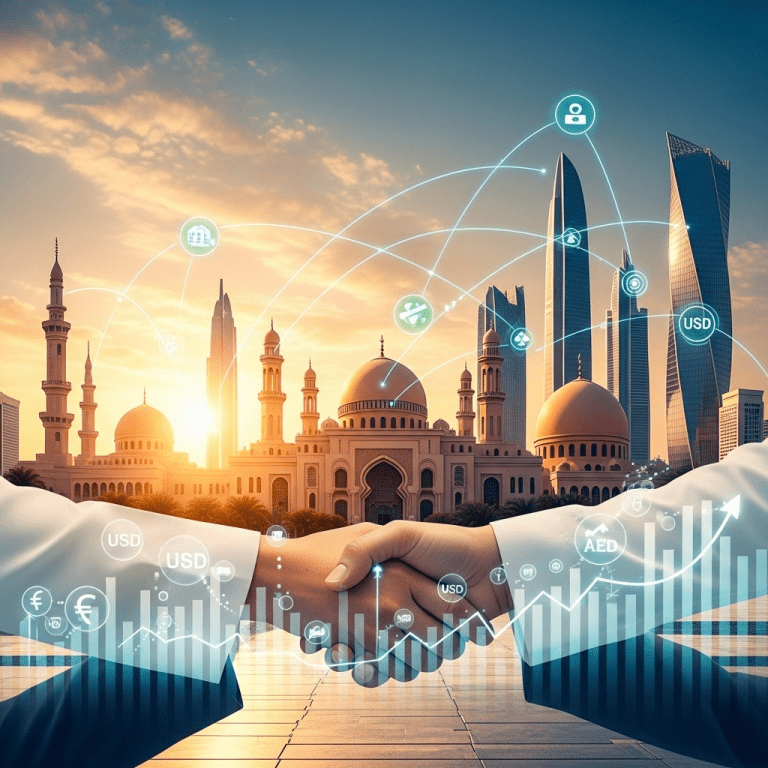This year has marked a significant week for hope in the Middle East, triggering economic optimism and renewed prospects for regional growth. Beyond the headlines, these positive shifts are fostering investor confidence and opening fresh gateways for cross-border collaboration. But what has truly changed in the regional economic landscape, and how might these hopeful developments shape the Middle East’s future?
The Economic Impact of a Significant Week for Hope in the Middle East
The phrase “a significant week for hope in the Middle East” is more than a tagline—it encapsulates a series of landmark events, agreements, and policy strides that have the potential to transform the region’s economy. Over the past week, diplomatic breakthroughs have sparked cautious optimism among governments and international investors alike. While political stability is often intertwined with economic prosperity, this alignment is particularly pronounced in the Middle East, a region rich in resources, ambition, and untapped potential.
Drivers Behind Renewed Economic Optimism
Diplomatic Progress Ushers in Investment Confidence
Optimism surged when several neighboring states agreed to de-escalate tensions, leading to the re-opening of vital trade routes and deepened cooperation on infrastructure projects. These diplomatic steps have set the stage for future economic expansion by reducing uncertainty—a key prerequisite for attracting foreign direct investment and encouraging business expansion in sectors such as energy, technology, and tourism. For global investors searching for stable, long-term opportunities, these positive developments have positioned the Middle East as an increasingly attractive destination. Numerous analysts, including those at ThinkInvest, point to improvements in transparency and cross-border collaboration as essential factors signaling a new era for the region’s economy.
Green Energy and Sustainable Initiatives
This significant week has also seen bold moves towards green energy and sustainability. Regional leaders announced new partnerships and clean energy projects, reaffirming their commitment to diversify away from oil and gas dependence. As climate change concerns intensify, the Middle East’s strategic shift towards renewable investments lends greater resilience to its economies. Solar and wind power initiatives, green hydrogen research, and energy-efficient urban planning signal a forward-thinking approach that aligns with international ESG (Environmental, Social, Governance) standards.
Key Sectors Benefiting from the Surge in Hope
Tourism and Hospitality Rebound
One of the clearest beneficiaries of this positive momentum is the tourism industry. With improved diplomatic relations, new direct flight routes, and streamlined visa processes, the region is witnessing a sharp uptick in arrivals. Major hospitality projects, including luxury resorts and cultural heritage sites, have resumed or accelerated. According to data compiled by ThinkInvest, tourism-reliant economies are projected to outpace their pre-pandemic growth rates if the current optimism endures.
Technology and Innovation
The spirit of hope is also driving regional governments to invest heavily in technology infrastructure. This week saw new tech hubs announced, startup competitions launched, and international partnerships fostered—increasing the Middle East’s visibility as a global innovation player. Initiatives supporting fintech, AI, blockchain, and e-commerce are not only diversifying economies but also equipping the local workforce with future-ready skills.
Challenges and Risks to Sustained Economic Growth
While the region is experiencing a significant week for hope in the Middle East, it is important to recognize that challenges remain. Geopolitical volatility, fluctuating oil prices, and lingering socioeconomic disparities could dampen the speed and scale of economic progress. Continued stability will depend on sustained diplomatic engagement, transparent governance, and effective social policies.
Ensuring Inclusive Growth
A critical aspect for policymakers is ensuring the benefits of economic expansion reach all levels of society. Job creation, especially for the region’s burgeoning youth population, must be a top priority. Educational reforms and targeted skills training are essential to prepare citizens for the transforming labor market. Empowering women and minority groups to participate fully in economic life will further enhance growth prospects and strengthen social cohesion.
Future Outlook: Transforming Hope into Long-term Prosperity
With global investors watching closely, governments and private sector leaders must capitalize on this momentum to implement structural reforms and foster innovation. Enhanced regional cooperation, digital transformation, and active participation in the global green economy are vital to converting today’s optimism into enduring prosperity.
The events of this significant week highlight a turning point—one that demonstrates the Middle East’s ability to chart a resilient path forward. As outlined by ThinkInvest, regional economies that focus on interconnectivity, adaptability, and inclusiveness will be best positioned to thrive amid an evolving global landscape.
Conclusion
In summary, a significant week for hope in the Middle East has ignited fresh economic ambitions and drawn worldwide attention to the region’s progress. While challenges remain, the seeds of prosperity have been sown through diplomacy, innovation, and strategic investment. By fostering lasting partnerships and prioritizing sustainable growth, the Middle East stands at the threshold of a new economic era—one driven as much by optimism as by opportunity.









